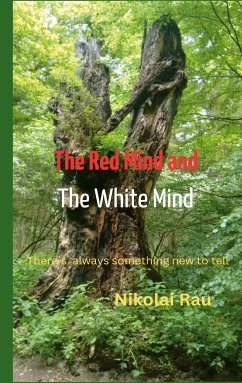
Never Human Again (eBook, ePUB)

PAYBACK Punkte
0 °P sammeln!
Three decades of continual polypandemic more or less eradicated the weak and the elderly, and finally, through vaccination, the world population achieved viral immunity. The society changed significantly over this period. The last pandemic, caused by the AGIS-CoV-1 virus (Acute Gastrointestinal Syndrome Corona Virus-1), initially seemed similar to the previous ones, a mutation of the original, attacking specific combination of organs. This particular strain affected the intestinal tract, radically changing the gut microbiota. The symptoms, however, seemed mild, and the virus was deemed as unth...
Three decades of continual polypandemic more or less eradicated the weak and the elderly, and finally, through vaccination, the world population achieved viral immunity. The society changed significantly over this period. The last pandemic, caused by the AGIS-CoV-1 virus (Acute Gastrointestinal Syndrome Corona Virus-1), initially seemed similar to the previous ones, a mutation of the original, attacking specific combination of organs. This particular strain affected the intestinal tract, radically changing the gut microbiota. The symptoms, however, seemed mild, and the virus was deemed as unthreatening at the time. Even though the virus was not deadly, the aftermath altered society completely. The human microbiota was depleted severely as a result of the virus attack. Most gut bacteria types were destroyed, except some with specific mutations. Depending on the host microflora composition after the infection, several classes of behavioral responses were observed, leaving the human host dominated by only a few types of bacterial- rather than hundreds previously. The drastically altered human gut microbiota transformed the host's neurotranmsmitter biochemistry in the brain, leaving personal traits identified with the bacteria type. Six major groups in society coexisted. The groups differed not only in the gut bacterial composition but also by significant differences in behavior, leading to a society differentiated into subclasses. The impact effected the political system and led to the formation of a new religion Dr. Jonas Frost, a cell biologist, belonged to the Hyper-class, known for their typical hyperactivity and intensity. He was on the verge of making an extraordinary discovery. The bacteria had established access to the Homosapien brain and were modifying, not only the human behavior but also the genome for a new human species: The Homo U-Enteroensis.
Dieser Download kann aus rechtlichen Gründen nur mit Rechnungsadresse in A, B, BG, CY, CZ, D, DK, EW, E, FIN, F, GR, H, IRL, I, LT, L, LR, M, NL, PL, P, R, S, SLO, SK ausgeliefert werden.













